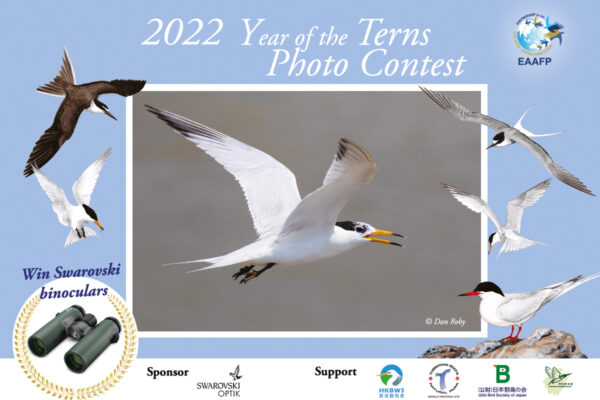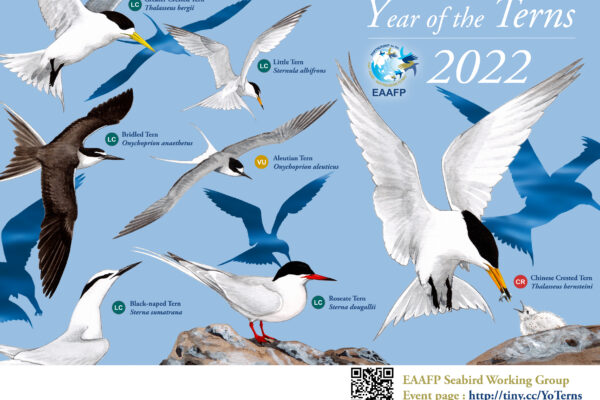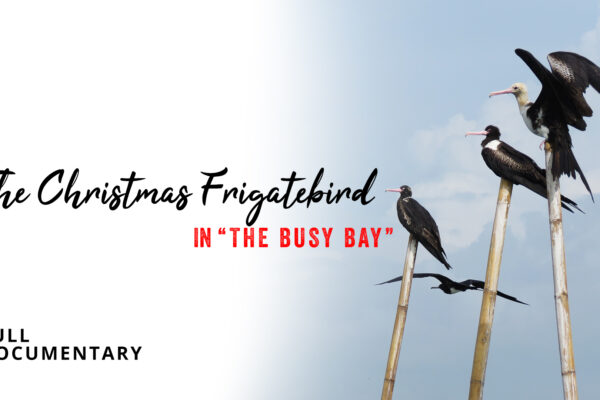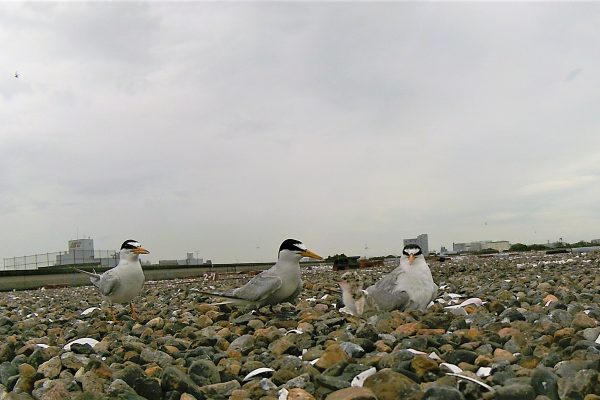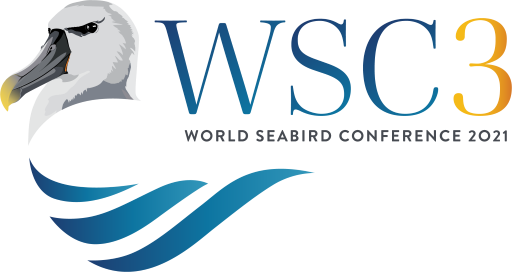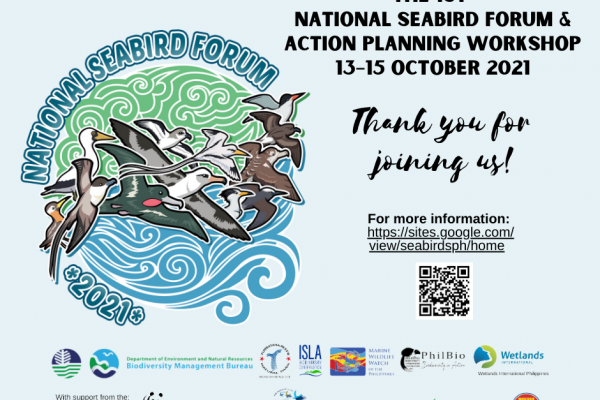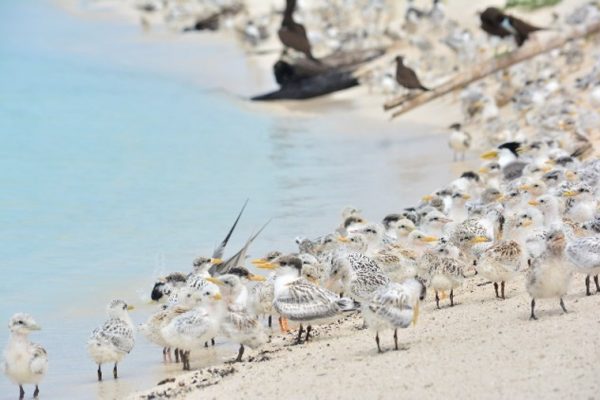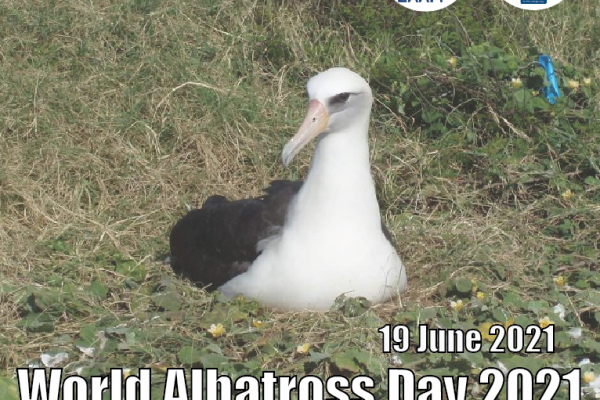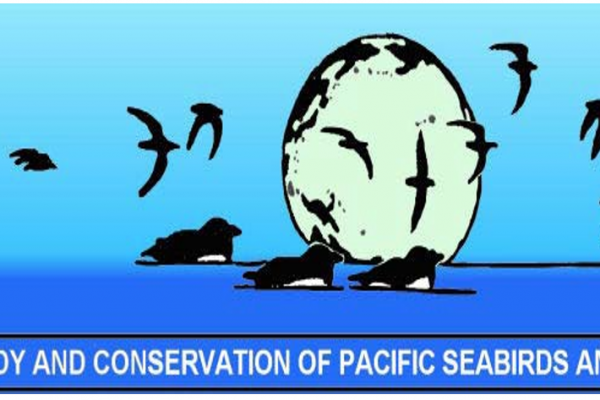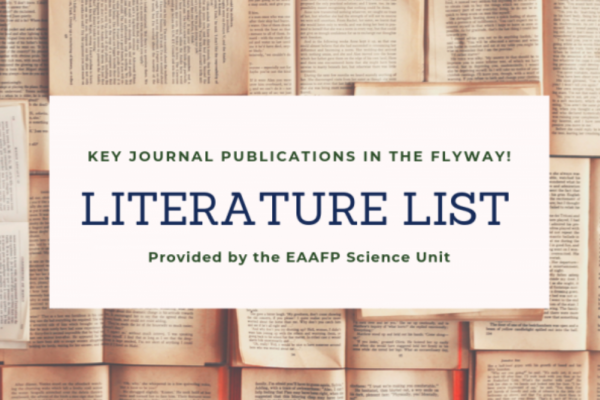-
Join 2022 “Year of the Terns” Photo Contest
English Simplified Chinese Traditional Chinese Japanese Korean Indonesian Official Photo Contest website: https://woobox.com/dsmyac Photo Contest Guidelines PDF: English / Bahasa Indonesia / Chinese [Simplified / Traditional] / Japanese/ Korean For more in Japanese, visit the Wild Bird Society of Japan (WBSJ) website: https://www.wbsj.org/activity/event/terns-photocontest-2022/ Learn more about the "Year of the Terns" campaign, click here. EAAFP Year of The Terns Photo Contest There are over 150 seabird species in the East Asian – Australasian Flyway. They are facing the risk of extinction due to various threats such as incidental bycatch, overfishing, pollution, invasive species, and habitat loss. To raise awareness of seabirds and their conservation, the East Asian – Australasian Flyway Partnership (EAAFP) and the Seabird Working Group designated 2022 as the “Year of the Terns”. Birdwatchers and photographers are encouraged to join the “Year of the Terns” Photo Contest to discover the beauty of the seabirds, especially terns, and win exciting prizes! Eligibility The Year of the Terns Photo Contest is open to all participants regardless of age, gender, residence and nationality. Participation in the Year of the Terns Photo Contest is free - there is no registration fee. All entries must involve images photographed in countries within the East Asian-Australasian Flyway Partnership’s region. Submission Guidelines 1. Submission deadline: 17 September (Saturday), 11:59 p.m. (KST). 2. All entries must be uploaded to the Year of the Terns Photo Contest webpage. 3. Photos must be taken from 1 January 2022 through 17 September 2022. 4. There are two categories for entrants to submit entries and each entrant may submit up to 3 photos for the whole contest. 5. All submitted photographs must be in JPEG format, and NOT exceed 5MB in file size. Rename the file name to Photographer's name_MMDD (date of entry), e.g. Kenneth_Lam_0706. 6. Photographs should not be substantially altered with digital means beyond the standard types of edits. 7. No signature, logos, and watermark text should be present on submitted images. How to win: (Please refer to the Contest guidelines for further details.) 1. The Best Photo of Tern Species Each entrant may only submit one entry per species. Entrants may, however, submit multiple entries covering different species of terns. Each entrant needs to write the description of the photo in English within 100 words (e.g., threats to the species, conservation efforts). 2. Tern Photo with the Best Conservation Message Each entrant may submit a tern photo and message in English within 200 words. Each photo and its corresponding message should highlight, for example, the threats to seabirds and the marine environment, conservation efforts, or relations between or among seabirds and other creatures in marine ecosystems. Most Voted Photo The entrant whose photo receives the most votes on the Year of the Terns Photo Contest webpage will be the winner. Note: Entrant who submitted all 3 photos to category 1 will not be able to submit additional photos for category 2. Likes’ on social media are not regarded as valid votes. Only votes on the webpage will be counted. Inquiries: Please contact us at yearoftheterns@gmail.com Please use the hashtag-YearofTerns (#YearofTerns) for promoting the event or calling for votes on the Year of the Terns Photo Contest webpage. Winners Announcement [The Best Photo of Tern Species] Photographer: Haocheng Wang Species: Chinese Crested Tern Date of photo taken: 18 August 2022 Location: Jiaozhou Bay, Qingdao, China [Tern Photo With the Best Conservation Message] Photographer: Erickson A. Tabayag Species: Sooty Tern Date of photo taken: 29 July 2022 Location: Lawak Island, Municipality of Kalayaan, Palawan, The Philippines [Most Voted Photo] Photographer: Le Manh Hung Species: Bridled Tern Date of photo taken: 18 May 2022 Location: Vietnam Photo Contest Judges Meet the "Year of the Terns" Photo Contest Judging Panel: Prof. Daniel Roby Dedicated to Seabird research and conservation for over 25 years, Professor Daniel Roby was enthralled by wildlife from a very young age. Dan has had an illustrious career as an educator and conservationist, recently receiving the Lifetime Achievement Award of the Pacific Seabird Group. He has also been involved in countless projects ranging from studying the long-term effects of the Exxon Valdez oil spill on seabirds in Alaska to becoming the technical advisor for the restoration of the Critically Endangered Chinese Crested Tern in China. Currently retired, Dan is working on editing a book on the conservation and restoration of Oregon’s birds. Ms. Angelique Songco Starting her career in the Armed Forces of the Philippines, later becoming a diving instructor after falling in love with the ocean, Angelique Songco has more than 20 years of experience as a site manager of Tubbataha Reefs Natural Park, an UNESCO World Heritage Site and Flyway Network Site. Referred to as “Mama Ranger,” Angelique is also a member of the EAAFP Seabird Working group and works on the frontier in safeguarding important sites. With Angelique at the helm, Tubbataha received the Platinum Global Ocean Refuge Award – acknowledged as a model site and one of the best-managed marine protected areas in the world. Dr. Kiyoaki Ozaki Dr. Ozaki has fifty years of experience as a wildlife biologist and conservationist working in Japan and Southeast Asian countries, with special interests in Okinawa Rail, Short-tailed Albatross, Japanese Crested Ibis, Roseate and Black-naped Terns. His studies include ecology, migration and conservation biology. He was also responsible for running the bird banding program in Japan between 1995-2017. Dr. Ozaki is the Deputy Director-General of Yamashina Institute for Ornithology since 2010, as the President of the Japanese Bird Banding Association since 2022, and as the President of Ornithological Society of Japan from 2018-2021. Ms. Edin Whitehead As a seabird scientist and conservation photographer in Aotearoa, New Zealand, Edin “combines science and storytelling to help people explore our natural world.” She works for the Northern New Zealand Seabird Trust as a biologist and photographer. She additionally spends her ‘free’ time in the wilderness, on conservation projects as a volunteer, or out at sea, to inspire people to explore, understand and conserve our earth. Edin is a doctoral researcher at the University of Auckland. She also teaches photography workshops or guides pelagic trips to take people to see seabirds that live in the Aotearoa area. Mr. Yat-tung Yu Yat-tung Yu, a veteran birdwatcher, has always been fascinated by seabirds, particularly terns. He initiated the breeding tern survey in Hong Kong in 1998 and continues to conduct and promote tern ringing locally in Hong Kong and in the EAA Flyway. Despite his efforts, however, terns unfortunately still receive little attention from people in the region. Regardless, he aims to further promote tern research and conservation activities to save them from various threats. Currently, Yat-tung is the Director of the Hong Kong Bird Watching Society and Coordinator of the EAAFP Seabird Working Group.
Continue reading -
EAAFP Secretariat and Seabird Working Group launches “Year of the Terns” in 2022
On 22nd February, 2022, the EAAFP Secretariat and EAAFP Seabird Working Group announced 2022 as the “Year of the Terns” for the EAA Flyway. The announcement is a preface to the focus that EAAFP will put on raising awareness and promoting collaboration for the conservation of seabirds in the East Asian-Australasian Flyway (EAA Flyway). The campaign was officially launched during the 49th Annual Meeting of Pacific Seabird Group (PSG) Northeast Asia Seabird Conservation Committee Meeting. There are over 150 seabird species in the EAA Flyway. Many seabird species have long trans-equatorial migration routes and spend most of the year at sea, only returning to land to breed. Since much of their annual lifecycle is spent offshore, they are especially difficult to study and most aspects of their life histories remain poorly understood in the EAA Flyway. While many populations are doing well, others are experiencing population declines that are difficult to detect given the months they remain away from global eyes. To increasing awareness of these Ocean Sentinels, the Secretariat and the EAAFP Seabird Working Group are excited to designate 2022 as the “Year of the Terns”. The Secretariat and the EAAFP Seabird Working Group hope to accomplish the following three objectives with this campaign: 1. To raise awareness of seabirds, especially terns, within EAA Flyway 2. To encourage dialogues and collaboration on seabirds research and conservation within EAA Flyway 3. To promote and strengthen working relationships within EAAFP Seabird Working Group, also with site managers of Flyway Network Sites for seabirds, and beyond To do so, seven, out of the 16 EAA Flyway tern species, were selected for the campaign, including the Chinese Crested Tern (CR), Aleutian Tern (VU), Greater Crested Tern, Bridled Tern, Little Tern, Black-naped Tern and Roseate Tern. The Secretariat and Seabird WG will also be developing activities for the campaign accordingly. Robb Kaler, Chair of EAAFP Seabird Working Group, expressed “According to a global assessment, seabirds are generally more threatened than other comparable groups of birds. Many populations have declined rapidly in recent decades due to various threats, including incidental bycatch, overfishing, pollution, invasive species, warming oceans and more. We hope that the “Year of the Terns” campaign, will raise awareness about seabirds, both for the health of their populations, and as an indicator of the health of oceans on which seabirds and all of us depend. We are excited for this opportunity for more joint actions to conserve seabirds in the EAA Flyway and expand the Seabird Working Group’s network of partners.” Doug Watkins, Chief Executive of EAAFP Secretariat said. “Seabirds received relatively less attention and conservation effort in the EAA Flyway compared to other taxa, probably due to the vast distribution range of many species and the challenges to study them. Therefore, we need to strengthen our network in seabird studies and conservation and promote more collaboration in the region, and the actions cannot be delayed.” Stay tuned for more upcoming activities such as a photo competition and a talk series. The EAAFP Secretariat and Seabird Working Group invite everyone to support and celebrate the “Year of the Terns with them! Check the “Year of the Terns” webpage: https://www.eaaflyway.net/year-of-the-terns-2022/ For inquiries and interest to support the Year of the Terns, please contact: Ms. Vivian Fu Communication Officer, EAAFP Secretariat Email: communication@eaaflyway.net
Continue reading -
Christmas Frigatebirds in the Busy Bay of Jakarta Bay, Indonesia – A Documentary Film for Christmas Frigatebird Conservation in Indonesia
Documentary films can be a perfect platform to create dialogue and raise awareness for both individual and broader social change. Seabirds Indonesia…
Continue reading -
Report of the Breeding Bird Atlas of Japan -Mapping the present status of Japan’s birds 2016-2021.
Japan Bird Research Association has recently published “Report of the Breeding Bird Atlas of Japan -Mapping the present status of Japan’s birds…
Continue reading -
The Third World Seabird Conference: seabird study and conservation in Asia
The Third Seabird World Conference was held virtual from 4 to 9 October 2021 (covering all time zones). It was scheduled to be convened in Hobart, Australia in 2020…
Continue reading -
The First National Forum and Action Planning Workshop for Seabirds in the Philippines
Despite the restriction imposed by the COVID-19 pandemic, the 1st National Seabird Forum and Action Planning Workshop was successfully held online from 13–15 October 2021. Organized by a consortium…
Continue reading -
EAAFP Small Grant Fund project: 2021 Tubbataha Seabird Survey, Philippines
Seabirds spend their entire life in the open ocean, hence, they are a good indicator of coral reef health. Their nutrient-rich droppings fertilize roosting grounds and the surrounding water to the benefit of other marine life. Seabirds are one of the most highly threatened species of animals. Although they have a relatively long life span, they breed much slower and have fewer offspring than other birds in general. Partly supported by EAAFP Small Grant Fund for Working Groups and Task Forces, this year, the Tubbataha Management Office (TMO) use seabirds as an indicator to assess of how well – or how badly – the site are conserving Tubbataha Reefs Natural Park, A Flyway Network Site (EAAF 123) in the Philippines. We monitored the population of the seven species that breed in the Park, the: Red-footed Booby (Sula sula), Brown Booby (Sula leucogaster), Masked Booby (Sula dactylatra), Great Crested Tern (Thalasseus bergii), Sooty Tern (Onychoprion fuscata), Brown Noddy (Anous stolidus), and endemic Black Noddy subspecies (Anous minutus worcesteri). We use various monitoring methods and integrate results for a more accurate estimate of the populations. Distance counts are conducted once a month, while direct counts are done once a quarter. In-flight counts are done late in the afternoon, and dawn counts are made before the birds leave the islet to forage for food. When called for, we would do night counts of birds that come to roost after sundown. Adults, subadults, juveniles, pullus, eggs, and nests of each species are counted. Two teams conduct the count of the various species in various life stages. In all, it took a total of 39 teams to complete the survey. In May each year, we join the marine park rangers (MPR) for quarterly monitoring. The Covid 19 situation interposed several complications that delayed our trip, with interesting results. Together with WWF-Philippines staff, and volunteers, we were finally able to set sail on 2 June 2021. This year’s survey was funded by the East Asian-Australasian Flyway Partnership (EAAFP), Department of Environment and Natural Resources (DENR), and Pilipinas Shell Foundation, Inc. (PSFI). Report of the surveys will be shared by the end of 2021. Tubbataha Reefs Natural Park is both a Ramsar site and a Flyway Network Site of the EAAFP. Located 92 nautical miles southeast of Palawan, it is a 97,030-hectare marine protected area which was established on 11 August 1988. It is the largest no-take marine protected area in the Philippines. Its two islets are among the last known safe breeding habitats of seabirds in Southeast Asia. Article prepared by Tubbataha Management Office. The Tubbataha Reefs Natural Park is in the middle of the Sulu Sea. It is composed of two atolls and a reef. The Bird Islet is in the North Atoll and the smaller South Islet is located in the South Atoll. Marine park rangers construct the ‘Tubbataha Hilton’, our shelter from the sweltering heat in Bird Islet. Photo © Segundo Conales Jr Our team from Puerto Princesa City met with MPRs at the ranger station upon arrival. Research Officer Retch Alaba gave a briefing on the work at hand and assigned tasks for each person. Photo © Rowell Alarcon Our first task before setting foot on the islets was to do a distance count. Park Ranger Jeffrey David (in blue) leads the count in Bird Islet, where 80% of the total seabird population of Tubbataha reside. Photo © Rowell Alarcon In the following days, the teams got busy with their respective tasks. Here, one group counts the eggs of the Great Crested Tern. Photo © Kymry Delijero Showing off their EAAFP hats, Angelique Songco and Rowell Alarcon count Brown Noddies. Photo © Kymry Delijero Marine Park Ranger Segundo Conales Jr., (with umbrella) counts the eggs, nests, and adults of Black Noddy in the structure while John Eric Magbanua, Bantay Dagat of Local Government of Cagayancillo (LGU), serves as recorder. Photo © Retch Alaba From left: MPR Noel Bundal, SN2 Paul Balonsay PN, and Joan Pecson, WWF-Philippines, start the in-flight count at 4:30, when birds begin to arrive from the day’s foraging. Photo © Kymry Delijero The team doing a night count of the Sooty Tern population that landed after sundown. The estimate was 6000 individuals! Photo © Kymry Delijero From left to right: Marine Park Rangers Segundo Conales Jr, SNDP Paul Balonsay PN, SN2 Francis Lim and Noel Bundal (in blue shirt) with tallies their day’s count in the native dining table inside our hut. Photo © Kymry Delijero We observed lesser seabirds, probably because we arrived at the end of the breeding season when most of the adults have left. We also counted lesser eggs because most of the birds were already in the pullus or juvenile stages. Photo © Kymry Delijero Black Noddies continue to occupy the artificial nesting structures we built in 2017. Last year, we added new structures made of PVC and steel pipes (above), which are designed to last longer. Photo © Gerlie Gedoria We planted saplings of native trees in the islet in 2020 but most did not survive. Marine Park Rangers Amado Cayabo (LGU) and Cris Caranay (TMO) construct bamboo guards around a sapling so birds would not build their nests on the saplings and use their leaves as nesting materials. Photo © Kymry Delijero The only known breeding Masked Booby in Philippines lain an egg for the fourth time (!) since 2019. A second egg appeared a week later. Photo © Retch Alaba We used the WWF-Philippines research vessel, M/Y Navorca for the survey. Here, the team disembarks for the survey in South Islet. Photo © Rowell Alarcon This year's seabird survey team. Photo © Rowell Alarcon
Continue reading -
World Albatross Day 2021 “Ensuring Albatross-friendly Fisheries”
Today is the World Albatross Day (WAD)! It was launched in 2020 by the Agreement on the Conservation of Albatrosses and Petrels (ACAP) to dedicate 19th June every year to raise awareness of the conservation needs of albatrosses, petrels, and shearwaters. Many of them are being killed as a result of fisheries operations and other human-induced threats. This year, the theme for WAD2021 is “Ensuring Albatross-Friendly Fisheries”, to highlight the problems of populations of albatrosses, and other seabirds that are declining due to fisheries bycatch. Words from Mr. Robert (Robb) Kaler, Chair of EAAFP and Chair of EAAFP Seabird Working Group “This year’s theme of World Albatross Day “Ensuring Albatross-Friendly Fisheries” reminds us of the impact that human brought to, not only Albatrosses but many seabird species. Fishery bycatch is one of the main threats to the decline of seabirds worldwide. Scientists, government agencies, and the fishing industry sector are now implementing mitigation, in which some of them are simple to apply. In the EAA Flyway, studies about seabirds are very limited. World Albatross Day is a great opportunity to raise the awareness on seabird conservation, and highlight the importance of reducing impacts of the world’s fisheries on seabirds and other non-targeted species.” The problems of fisheries threatening albatrosses and other seabirds Many seabird species, especially Albatrosses, spend most of their lives soaring in open seas, except during the breeding time when they return to land to nest. Yet staying far from land does not stop seabirds from being impacted by human activities. In fact, nearly half of the world's seabird populations are declining, especially Albatrosses, with 15 of 22 species are threatened with extinction. Albatrosses feed mainly on fish and squid on the ocean’s surface. They can smell their prey from a far (up to 20 km away!). This extraordinary ability, however, exposes them to danger, for they are attracted to fishing vessels which use baited hooks in the longline fishery and can get caught and drown. An estimated 160,000 to 320,000 seabirds are killed annually in longline fisheries1. Trawl, purse seine, and gillnet fisheries are other gear types also have seabird bycatch issues. At least 400,000 seabirds (especially diving species) are estimated to be killed annually in gillnet fisheires globally2. According to a global assessment of threats to seabirds, the three primary threats are: (i) invasive species impacting 165 species, (ii) bycatch in fisheries affecting 100 species, and (iii) climate change affecting 96 species3. Albatrosses and petrels killed by bycatch in fishery ©Fabiano Peppes Conservation work in the EAA Flyway Scientists around the world are working on solutions to reduce seabird bycatch. Some of these methods are: bird-scaring lines (also called tori lines) with colorful streamers attached to lines to keep birds away, fishing at night to reduce interactions between birds and fishing activities, and adding weights to increase the sinking speed of baited hooks. Source: Birdlife International (2021) Towards Seabird-safe Fisheries - Global Efforts & Solutions In the East Asian-Australasian Flyway, especially in the Asian region, research on seabirds is rather limited, let alone the study on the impact of fisheries on seabirds. Yet, there is work by BirdLife International and Wild Bird Society of Japan (both EAAFP Partners), which developed a nationwide-scale hotspot map of seabird bycatch in gillnet fisheries in Japan (read [more]). Another project to evaluate mitigation ideas of seabird bycatch in gillnet under a controlled condition is ongoing, and data collection of seabird bycatch in gillnet fisheries in collaboration with local fishers is about to begin. Know about the three species of Albatrosses in EAAFlyway Laysan Albatross ©Simba Chan Laysan Albatross, Phoebastria immutabilis, is a large seabird (length: 79-81 cm) with white head with dark gray-brown upper wings. It is the most common albatross in open Pacific Ocean. The species is listed as Near Threatened (NT) by IUCN. Main threats in breeding sites are the invasion of rats and feral cats. Conservation or eradication of Polynesian rats had been successfully managed. The famous oldest known wild bird in the world Wisdom, still raising a chick at age 70, is of this species. Black-footed Albatross at Ogasawara Island ©Tomohiro Deguchi Black-footed Albatross, Phoebastria nigripes, (length: 68-74cm) has long, narrow wings and mostly dark except for a white ring around its long, thick bill. It breeds on oceanic islands across the tropical and subtropical North Pacific Ocean and adults concentrate on nesting islands in Izu and Ogasawara Islands of Japan and on Senkaku Islands. The species is listed as Near Threatened (NT) by IUCN because it is taken incidentally by longline fishery. Main threats used to be feral cats on Northwestern Hawaiian Islands where the eradication has been taken effectively. Short-tailed Albatross ©Lee Kwok Shing Short-tailed Albatross, Phoebastira albatrus is a large pelagic bird (length:84-94 cm) with long narrow wings adapted for soaring just above the water surface. It spends most of its life over northern Pacific Ocean and breeds on islands off Japan and more recently, Midway Atoll. Its population is estimated to be 7,365 birds and listed as Vulnerable (VU) by IUCN. Erosion, flooding, and high winds (blow chicks off their nests) at Tsubame-zaki colony, and black rats on Torishima remain as threats to the bird despite habitat management efforts that have been undertaken. Join the World Albatross Day activities: Follow the Albatross Task Force on Instagram (https://www.instagram.com/albatross_stories/), join the Albatross World Cup, take the Friday Quiz, see how much you know about Albatrosses in the world. Check also their Facebook (https://www.facebook.com/Albytaskforce/) and Twitter (https://twitter.com/AlbyTaskForce) World Albatross Day events in Japan (in Japanese): 世界アルバトロスデー Join the quiz from EAAFP about the World Albatross Day, click [here]! https://www.eaaflyway.net/wp-content/uploads/2021/06/WAD-video_final.mp4 References: Anderson, al. 2011. Global seabird bycatch in longline fisheries. Endang. Species Res. 14, 91–106 (http://www.int-res.com/abstracts/esr/v14/n2/p91-106/) Žydelis, al. 2013. The incidental catch of seabirds in gillnet fisheries: A global review. Biological Conservation. 162: 76-88. (https://doi.org/10.1016/j.biocon.2013.04.002) Dias al. 2019. Threats to seabirds: A global assessment. Biological Conservation. 237: 525-537 (https://doi.org/10.1016/j.biocon.2019.06.033) Birdlife International (2021) Towards Seabird-safe Fisheries - Global Efforts & Solutions.
Continue reading -
Recent work on seabird conservation in Northeast Asia – Summary of Northeast Asia seabird conservation committee meeting
In conjunction with the Pacific Seabird Group Annual Meeting held virtually from 22 to 26 February, 2021, the Northeast Asia Seabird Conservation Committee…
Continue reading -
Literature list (January-March 2021)
1) Biology & ecology Xu, Y., M. Kieboom, R. J. A. van Lammeren, Y. Si and W. F. de Boer (2021). “Indicators of site loss from a migration network:…
Continue reading

